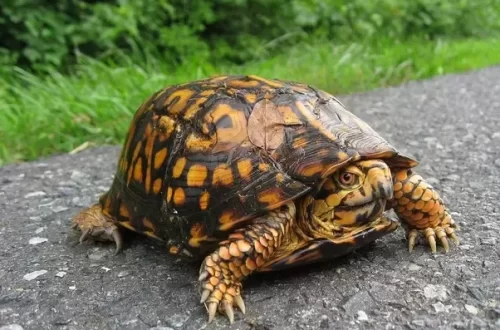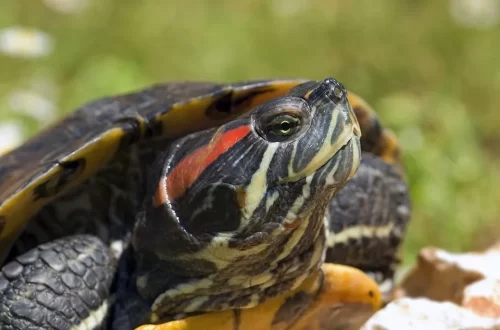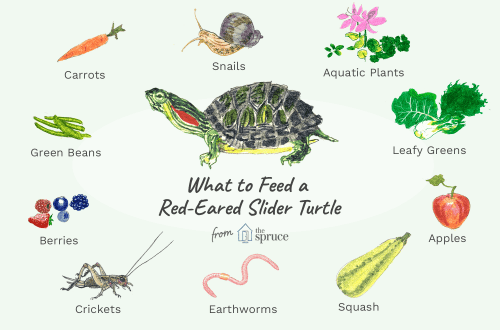Euthanasia of reptiles and amphibians
General overview of the issue of euthanasia in veterinary herpetology
There are many reasons to euthanize a reptile. In addition, there are many ways to accomplish this task. Techniques that are suitable for one purpose may not be suitable for another. The most important point, regardless of the cause and method, is the humane approach to euthanasia.
Indications for euthanasia, as a rule, are incurable diseases that cause suffering to the animal. Also, this procedure is carried out for research purposes or as part of the slaughter of animals for food or industrial purposes on farms. There are many methods for carrying out this procedure, but their main principle is to minimize the pain and unnecessary suffering of the animal and the speed or smoothness of the process.
Indications for euthanasia may include serious injuries, inoperable stages of surgical diseases, infections that pose a danger to other animals or humans, as well as a coma in emaciated turtles.
The process must be carried out properly, since sometimes an autopsy of the animal is required with the result recorded, and an incorrectly performed procedure can greatly blur the pathoanatomical picture characteristic of the suspected disease.
| | |
| Euthanasia by injection into the brain through the parietal eye Source: Mader, 2005 | Euthanasia by decapitation after anesthesia Source: Mader, 2005 |
Application points for injection into the brain through the parietal (third) eye Source: D.Mader (2005)
The brain of turtles is able to maintain its activity for some time under conditions of oxygen starvation, which must be taken into account, since there are cases of sudden awakening of the animal after the “last procedure”; apnea alone is not sufficient for death. Some foreign authors advised the supply of a formalin solution to the spinal cord or anesthetics, along with drugs of choice for euthanasia, and also speculated about the use of potassium and magnesium salts as cardioplegic agents (to reduce the possibility of restoring the pumping function of the heart) in order to prevent awakening. The method of inhalation of volatile substances for turtles is not recommended for the reason that turtles can hold their breath for a sufficiently long time. Fry in his writings (1991) points out that the heart continues to beat for some time after the euthanasia procedure, which makes it possible to collect blood if it is necessary for research for the purpose of post-mortem analysis of a clinical case. This must also be taken into account when ascertaining death.
Evidently, some researchers under euthanasia mean direct killing by physical damage to the brain with the help of tools, and the procedures adopted in veterinary medicine are performed as preparation of the animal.
There are many guidelines for euthanasia of reptiles published in the USA, but the title of “gold standard” is still given by many experts to Dr. Cooper’s monographs. For premedication, foreign veterinary specialists use ketamine, which makes it easy to deliver the main drug into the vein, and also reduces stress in the animal and prevents the owner from unnecessary worries if he is present at the euthanasia procedure. Next, barbiturates are used. Some specialists use calcium chloride after the administration of anesthetics. The drugs are given in various ways: intravenously, in the so-called. parietal eye. Solutions can be given intracelomically or intramuscularly; there is an opinion that these routes of administration are also effective, but the effect comes much more slowly. However, one should take into account the fact that dehydration, hypothermia or illness (which, in fact, always lies in the indications for euthanasia) can be inhibitors of drug absorption. The patient can be placed in an inhalation anesthetic delivery chamber (halothane, isoflurane, sevoflurane), but this technique can be very lengthy because, as mentioned above, some reptiles are able to hold their breath and go into anaerobic processes, which gives them some time to experience apnea; this primarily applies to crocodiles and aquatic turtles.
According to D.Mader (2005), amphibians, among other things, are euthanized using TMS (Tricaine methane sulfonate) and MS – 222. Cooper, Ewebank and Platt (1989) mentioned that aquatic amphibians can also be killed in water with sodium bicarbonate or an Alco-Seltzer tablet. Euthanasia with TMS (Tricaine methane sulfonate) according to Wayson et al. (1976) the least stressful. Recommended intracelomic administration of TMS at a dose of 200 mg/kg. The use of ethanol in concentrations greater than 20% is also used for euthanasia. Pentobarbital is administered at a dose of 100 mg/kg intracelomically. It is not preferred by some pathologists because it causes tissue changes that greatly blur the pathological picture (Kevin M. Wright et Brent R. Whitaker, 2001).
In snakes, T 61 is administered intracardially (intramuscularly or intracelomically as needed, also the drug is injected into the lungs. For poisonous snakes, the use of inhaled drugs or a container with chloroform is preferable if they are not available. T 61 is also served to lizards and turtles. In relation to very large crocodiles, some authors mention of a shot in the back of the head, if there is no other way.It is difficult for us to judge the euthanasia of very large reptiles by shooting from a firearm, even from the economic side of the issue, so we will refrain from commenting on this issue in particular. Freezing also has its place among reptile euthanasia techniques. This method has become widespread among hobbyists. Cooper, Ewebank, and Rosenberg (1982) have expressed human distrust of this method, even if the patient is prepared before placement in the chamber, due to the fact that freezing in the freezer takes a long time. For freezing, they preferred to place the animal in liquid nitrogen. However, in the absence of alternatives, this method is sometimes used after anesthetizing the animal.
One of the ways to damage the brain with a tool after the introduction of the animal into anesthesia. Source: McArthur S., Wilkinson R., Meyer J, 2004.
Decapitation is certainly not a humane method of euthanasia. Cooper et al. (1982) indicated that the reptilian brain may be able to perceive pain up to 1 hour after rupture with the spinal cord. Many publications describe the method of killing by damaging the brain with a sharp instrument. In our opinion, this method takes place in the form of supplying solutions to the brain by injection into the parietal eye. Also inhumane is bleeding (the temporary viability of the brain of reptiles and amphibians during hypoxia was mentioned above), strong blows to the head and the use of firearms. However, the method of shooting from a large-caliber weapon into the parietal eye of very large reptiles is used due to the impossibility of carrying out more humane manipulations.
The success of various euthanasia techniques (according to Mader, 2005):
Animals | Deep freezing | Introduction chemical substances | Immersion in solutions | Inhalation | Physical impact |
Lizards | + | — | + | + | |
Snakes | + | — | + | + | |
Turtles | + | — | — | + | |
Crocodiles | — | + | — | — | + |
Amphibians | + | + | — | + |
Referring to BSAVA’s Exotic Animals (2002), the euthanasia scheme for reptiles adopted in the West can be summarized in a table:
Stage | Preparation | Доза | Route of administration |
1 | Ketamine | 100-200 mg/kg | in / m |
2 | Pentobarbital (Nembutal) | 200 mg / kg | i/v |
3 | Instrumental destruction of the brain | ||
Vasiliev D.B. also described the combination of the first two stages of the table (the supply of Nembutal with the preliminary administration of ketamine) and the intracardial administration of barbiturate to small turtles. in his book Turtles. Maintenance, diseases and treatment” (2011). We usually use a regimen consisting of intravenous propofol at the usual dose for reptile anesthesia (5-10 ml/kg) or a chloroform chamber for very small lizards and snakes, followed by intracardiac (sometimes intravenous) lidocaine 2% (2 ml/kg). kg). After all the procedures, the corpse is placed in a freezer (Kutorov, 2014).
Kutorov S.A., Novosibirsk, 2014
Literature 1. Vasiliev D.B. Turtles. Contents, diseases and treatment. – M .: “Aquarium Print”, 2011. 2. Yarofke D., Lande Yu. Reptiles. Diseases and treatment. – M. “Aquarium Print”, 2008. 3. BSAVA. 2002. BSAVA Manual of Exotic Pets. 4. Mader D., 2005. Reptile medicine and surgery. Saunders Elsvier. 5. McArthur S., Wilkinson R., Meyer J. 2004. Medicine and surgery of tortoises and turtles. Blackwell Publishing. 6. Wright K., Whitaker B. 2001. Amphibian medicine and captive husbandy. Krieger Publishing.
Download article in PDF format
In the absence of herpetologist veterinarians, the following method of euthanasia can be used – an overdose of 25 mg / kg of any veterinary anesthesia (Zoletil or Telazol) IM and then into the freezer.





